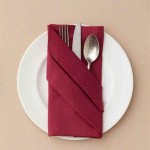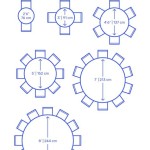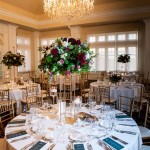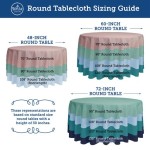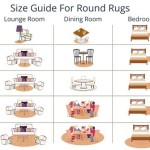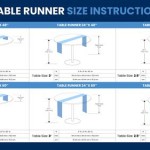Can You Use a Tablecloth and Placemats? Exploring Table Setting Options
The practice of setting a table extends beyond simply providing a surface for eating. It encompasses aesthetics, functionality, and even etiquette. Within the realm of table setting, the question often arises: "Can you use a tablecloth and placemats simultaneously?" The answer is nuanced and depends heavily on the desired style, occasion, and the overall aesthetic goals.
Both tablecloths and placemats serve distinct purposes. A tablecloth provides comprehensive coverage for the table surface, protecting it from spills, scratches, and heat. It also introduces a layer of visual appeal, contributing to the overall ambiance of the dining area. Placemats, on the other hand, are individual coverings designed to protect specific areas of the table directly beneath each diner's place setting. They also offer a localized decorative element.
The decision to use both a tablecloth and placemats can be influenced by a variety of factors, including the formality of the occasion, the type of table being used, and personal preferences. There are arguments to be made for and against combining these two elements, each with its own set of considerations.
Understanding the Purposes of Tablecloths and Placemats
Tablecloths are primarily functional, acting as a barrier against potential damage to the table's surface. They prevent liquids from seeping into the wood, protect against scratches from dishes and cutlery, and can provide a degree of insulation against hot plates or dishes. Beyond functionality, tablecloths contribute significantly to the aesthetic of the dining experience. They can be used to introduce color, texture, and pattern, setting the tone for a meal, whether it be formal or casual.
Tablecloths come in a variety of materials, each offering different levels of protection and elegance. Linen tablecloths are often associated with formal dining due to their sophisticated appearance and luxurious feel. Cotton tablecloths are more versatile and suitable for both casual and semi-formal settings. Synthetic fabrics, such as polyester, are often chosen for their durability and ease of care, making them ideal for everyday use or situations where frequent laundering is required.
Placemats, while also providing a protective function, typically serve a more individualized purpose. They define each diner's personal space at the table, creating a sense of order and visual separation. They protect the table surface from direct contact with plates, cutlery, and spills within a limited area. Like tablecloths, placemats are available in a diverse range of materials, including fabric, cork, vinyl, and wood, allowing for a wide range of aesthetic expressions.
The material of a placemat can influence both its durability and its visual impact. Woven placemats, such as those made from bamboo or rattan, offer a natural and textured look, suitable for rustic or bohemian-inspired settings. Vinyl placemats are easy to clean and resistant to stains, making them practical for everyday use. Elaborate fabric placemats, often featuring intricate designs or embroidery, can add a touch of sophistication to a more formal table setting.
Arguments for Using Both Tablecloths and Placemats
Employing both a tablecloth and placemats can enhance the overall aesthetic appeal of a table setting. The tablecloth serves as a foundational layer, providing a unifying backdrop upon which the placemats can then add individual points of interest and visual definition. This layering effect can create a richer and more visually engaging dining experience.
Beyond aesthetics, combining a tablecloth and placemats can provide an extra layer of protection for the table. While the tablecloth offers comprehensive coverage, the placemats provide localized protection against spills and scratches directly under each diner's place setting. This is particularly beneficial for delicate or antique tables that require extra care.
Using both can also define individual seating arrangements more clearly. While the tablecloth sets the overall stage, the placemats delineate each person's dining space, contributing to a more organized and personalized dining experience. This can be particularly useful in larger gatherings where visual cues can help guests feel more comfortable and situated.
The combination allows for greater flexibility in design. For example, a solid-colored tablecloth can be paired with patterned placemats to introduce visual interest without overwhelming the overall design. Conversely, a patterned tablecloth can be complemented by simple, solid-colored placemats to create a balanced and harmonious aesthetic. This flexibility allows for a wide range of creative expression and customization.
Arguments Against Using Both Tablecloths and Placemats
One of the primary arguments against using both a tablecloth and placemats is the potential for visual clutter. If the choices are not carefully considered, the combination can appear busy or overwhelming, detracting from the overall dining experience. This is particularly true if the tablecloth and placemats feature conflicting patterns or colors. Maintaining a sense of visual harmony is crucial when combining these elements.
Another consideration is the potential for unnecessary formality. In some settings, using both a tablecloth and placemats can appear overly formal or pretentious, particularly for casual meals or informal gatherings. A simple, well-chosen tablecloth or a set of elegant placemats might suffice to achieve the desired aesthetic without feeling overly elaborate.
The layering of tablecloths and placemats can also create practical inconveniences. The added layers can make it more difficult to clean up spills or messes quickly and efficiently. Crumbs and debris can become trapped between the layers, requiring more thorough cleaning. This is a particular concern for households with young children or for events where spills are likely.
Furthermore, the cost of purchasing and maintaining both tablecloths and placemats can be a factor. High-quality tablecloths and placemats can be expensive, and the cost of laundering or dry cleaning them regularly can add up over time. For those on a budget, choosing one or the other may be a more practical option.
Ultimately, the decision of whether or not to use both a tablecloth and placemats is a matter of personal preference and situational appropriateness. There is no definitive right or wrong answer. The key is to carefully consider the factors outlined above, including the desired aesthetic, the level of formality, the practicality of cleaning and maintenance, and the overall budget. By carefully weighing these considerations, one can make an informed decision that enhances the dining experience without compromising on style or functionality.
The choice should reflect an understanding of the setting, the type of meal being served, and the overall ambiance one wishes to create. Experimentation and a willingness to adapt are essential to achieving a table setting that is both visually appealing and functionally effective.

How To Set The Table With Placemats
The Great Debate Placemats Or Tablecloths Which Are Better Lc Studios

5 Ways To Decorate A Table With Runner Pottery Barn

How To Use Placemats Ultimate Style Guide French Affair

5 Ways To Decorate A Table With Runner Pottery Barn

20 40 60 Etiquette Setting The Table Tone For Your Dinner Party

How To Set The Table With Placemats

How To Use Placemats Ultimate Style Guide French Affair

Table Runners And Placemats Guide Crate Barrel

How To Buy The Right Tablecloth Or Placemats For Every Table And Occasion Cbc Life
Related Posts


